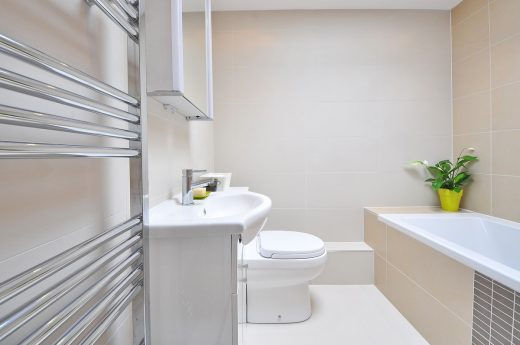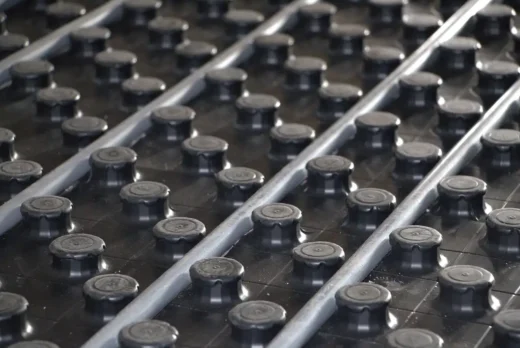A beginner’s guide to underfloor heating for first-time homeowners, UK better house heat tips, British property warmth guide
Underfloor Heating for First-Time Homeowners
17 May 2025
If you’ve just purchased your first home or you’re renovating a property and looking for ideas on how to improve it, underfloor heating may be something you’re considering. But is it worth it? How does it actually work? And what do you need to know before you get it installed?
This guide for beginners will take you through some warm-underfoot basics — how underfloor heating works, the different kinds available, and the pros and cons of each, plus what you can expect when you get it installed. Whether you’re building the bathroom of your dreams or reimagining your entire home, here’s what you need to know before taking the plunge.
What Is Underfloor Heating?
Underfloor heating is the heating system of the 21st century. It is located directly underneath the floor and spreads heat into the room from floor to ceiling. Rather than the traditional method of heating the air (usually via a large, unattractive radiator), underfloor heating produces warmth from the ground up, providing a cosy, efficient, and out-of-sight heat source.
It’s particularly popular in bathrooms, kitchens, open-plan living spaces, and new builds, but it can be laid in almost any room.
How Does Underfloor Heating Work?
There are two main types of underfloor heating:
- Electric Underfloor Heating (Dry Systems)
This system relies on electric cables or mats that are installed directly beneath your floor. When in use, the cables get hot and radiate warmth upwards.
- Best for: Smaller spaces, including bathrooms or a single room.
- Pros: Fast to install; good for renovations.
- Cons: Higher running costs than wet systems.
- Water Underfloor Heating (Wet Systems)
Wet systems are made up of a network of pipes embedded in the floor, linked to your boiler or heat pump. Heated water flows through the pipes, warming a floor above.
- Best for: Whole-home systems, or new construction.
- Pros: More energy efficient over the long term.
- Cons: Slightly more expensive and complex to install up front.
What Are the Benefits of Underfloor Heating?
Curious as to why everyone is going for underfloor heating? Here are the top benefits:
Comfortable Warmth
As heat rises from the floor, underfloor heating can provide an even temperature throughout, without cold spots or heating one part of a room more than another.
More Space and Better Aesthetics
Radiators off the walls will give you more freedom in how you design and furnish your rooms.
Energy Efficiency
Underfloor heating can also be more energy-efficient than traditional heating because it operates at lower temperatures, particularly when combined with good insulation or renewable heating sources like air source heat pumps.
Silent Operation
No more clicking radiators, no more humming fans, no more pipes expanding — just silent, comfortable warmth.
Increased Property Value
The majority of modern purchasers consider underfloor heating to be a premium upgrade, particularly in high-spec bathrooms or kitchens.
What Type of Flooring Works With Underfloor Heating?
Use of underfloor heating is allowed by most types of flooring, but the degree of heat transfer can depend on:
- Tiles & Stone: Great heat conductors, so opt for them when installing underfloor heating.
- Laminate & Engineered Wood: Work if they are detailed as suitable for use with underfloor heating.
- Carpet: Yes, but choose low-tog carpet and underlay so heat can flow through.
- Vinyl & LVT: Can be installed if the product is underfloor heating-compatible – please check manufacturer guidelines.
- Solid Hardwood: It could be more susceptible to temperature changes, so be careful.
Please always check with your flooring supplier that the product is underfloor heating compatible.
Can You Retrofit Underfloor Heating?
Yes, but it depends on your home.
- Electric systems are generally easier and cheaper to retrofit because of their lower floor height and lack of pipework. They’re great for home improvement and smaller spaces.
- Water-based systems are best in new builds, extensions, or major renovations because they require more floor depth and usually involve changes to the heating system.
If you’re already replacing floors or remodelling an entire space, that’s the best time to add underfloor heating.
What Does Installation Involve?
The installation process varies depending on the type of system and the size of your space.
For Electric Underfloor Heating:
- Prep: Subfloor is cleaned and insulated.
- Installation: Heating mats or cables are installed.
- Base: A screed or self-levelling mixture can be applied prior to flooring.
- Connect: The system is wired into your thermostat and electricity.
For Water Underfloor Heating:
- Design: A heating system is designed for each room.
- Laying In: Pipes are installed over the insulation and mechanically secured.
- Screed: The pipes are encased in either concrete or self-levelling mix.
- Connect: The pipes are connected to a manifold and your boiler or heat pump.
Installation can take from a few hours (for small electric systems) to several days for water-based systems in larger properties.
How Much Does Underfloor Heating Cost?
Costs will differ based on the system, as well as the size of the room and whether it is a new build or retrofit. Here’s a rough breakdown:
| System Type | Installation Cost | Running Cost (per day) | Best Use |
| Electric underfloor heating | £300–£900 per room | £0.10–£0.20 per m² | Small areas |
| Water underfloor heating | £2,000–£4,000+ whole home | £0.05–£0.10 per m² | Large areas |
Remember that electric systems have lower up-front costs but higher operating costs. Wet systems are more expensive to install, but they are an investment in saving you money in the long run.
Are There Any Downsides?
Underfloor heating is efficient and low-maintenance, but there are drawbacks:
- Upfront Cost: Installation of wet systems, in particular wet systems, is costly.
- Fitting Time: Longer than fitting radiators.
- Slow Heat-Up: It can take a bit of time to get there, though smart thermostats can aid in this.
- Not DIY-Friendly: Note – for wet systems, professional installation is a must!
Is Underfloor Heating Right for You?
Ask yourself:
- Are you renovating or building from scratch?
- Do you want to improve energy efficiency?
- Is comfort and aesthetics a priority?
- Can you accommodate floor height changes (in retrofits)?
If you answered yes, it’s possible that underfloor heating could be a good investment for your home.
Final Thoughts
Modern, efficient, and offering a timeless appeal, underfloor heating is the best way to heat your home. Whether you choose electric or water-based heating, careful planning and the right flooring are essential, as is consulting a professional to get it installed, whether you’re in Glasgow or Edinburgh.
Not only can you do away with cold floors and uneven heating as a luxury, but it’s also attainable as a home comfort or an energy-efficient upgrade.
Is it a good idea to get underfloor heating? Please talk to a heating specialist or local installer at Next Level today to see what will suit your space and budget.
Comments on this guide to A Beginner’s Guide to Underfloor Heating for First-Time Homeowners article are welcome.
Heating Articles
Heating Posts
Bathroom under tile heating advice

5 expert tips to reduce park home heating costs
Make your Home feel Cozier this Winter
Building Articles

image courtesy of article provider
Comments / photos for the A Beginner’s Guide to Underfloor Heating for First-Time Homeowners page welcome






